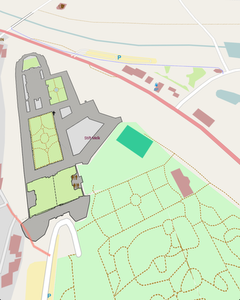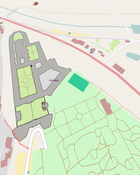Information
- Publication Type: Master Thesis
- Workgroup(s)/Project(s):
- Date: November 2012
- Date (Start): 27. March 2012
- Date (End): 30. September 2012
- TU Wien Library:
- Diploma Examination: 19. November 2012
- First Supervisor: Michael Wimmer
Abstract
Mapping and navigation applications on mobile devices such as smart phones or tablets are increasingly popular. Modern maps are often rendered directly from vector data. Since the performance of a previous CPU-based map renderer was unsatisfactory, a hardware accelerated map rendering prototype for mobile devices based on OpenGL ES 2.0 was created. A novel hybrid rendering architecture is introduced to combine the advantages of tile-based and true real time rendering solutions. The architecture consists of a tile server that renders base map tile images and a client to display them. The new third component, the post-processor, draws dynamic map features such as icons and text above the tiles in real time, enabling a 3D fly-over mode. All components run inside the same process directly on the device. For the rendering of lines, an important map feature, a new rending algorithm was developed, enabling to draw lines of arbitrary width with one of three different line cap styles. Additionally the line can be stippled with a user-defined pattern where each line dash is rendered with the selected cap style. Antialiasing of the line is supported with an arbitrary circularly symmetric filter kernel of userdefinable radius. To accelerate icon rendering, a texture atlas is used to store the icons, and a simple but effective packing algorithm has been developed to generate the atlas online.Additional Files and Images
Weblinks
No further information available.BibTeX
@mastersthesis{ROESSLER-2012-OGLES,
title = "Rendering Interactive Maps on Mobile Devices Using Graphics
Hardware",
author = "Lukas R\"{o}ssler",
year = "2012",
abstract = "Mapping and navigation applications on mobile devices such
as smart phones or tablets are increasingly popular. Modern
maps are often rendered directly from vector data. Since the
performance of a previous CPU-based map renderer was
unsatisfactory, a hardware accelerated map rendering
prototype for mobile devices based on OpenGL ES 2.0 was
created. A novel hybrid rendering architecture is introduced
to combine the advantages of tile-based and true real time
rendering solutions. The architecture consists of a tile
server that renders base map tile images and a client to
display them. The new third component, the post-processor,
draws dynamic map features such as icons and text above the
tiles in real time, enabling a 3D fly-over mode. All
components run inside the same process directly on the
device. For the rendering of lines, an important map
feature, a new rending algorithm was developed, enabling to
draw lines of arbitrary width with one of three different
line cap styles. Additionally the line can be stippled with
a user-defined pattern where each line dash is rendered with
the selected cap style. Antialiasing of the line is
supported with an arbitrary circularly symmetric filter
kernel of userdefinable radius. To accelerate icon
rendering, a texture atlas is used to store the icons, and a
simple but effective packing algorithm has been developed to
generate the atlas online.",
month = nov,
address = "Favoritenstrasse 9-11/E193-02, A-1040 Vienna, Austria",
school = "Institute of Computer Graphics and Algorithms, Vienna
University of Technology ",
URL = "https://www.cg.tuwien.ac.at/research/publications/2012/ROESSLER-2012-OGLES/",
}

 poster
poster thesis
thesis


